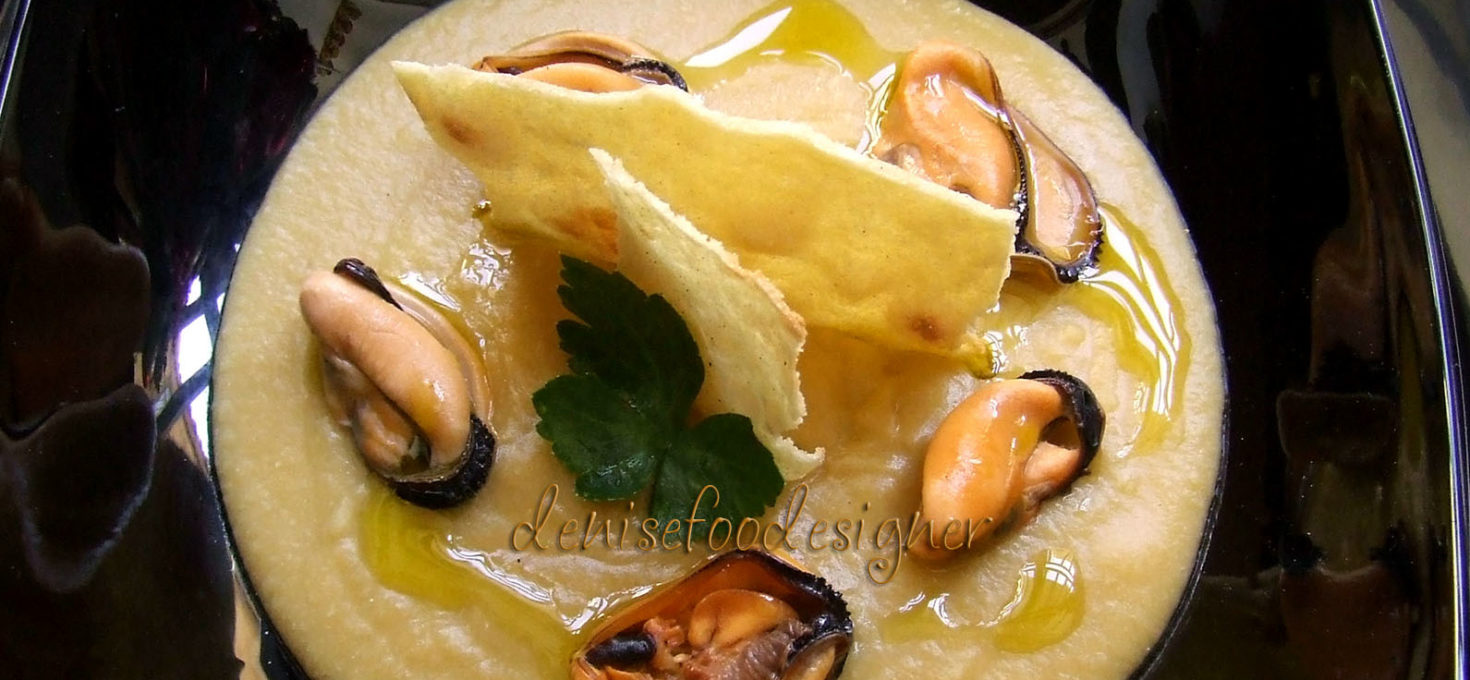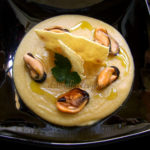The combination of beans and mussels is typical of southern Italian cuisine, mainly Campania. In this case I prepared the dish with some changes, creating a tasty starter. I also replaced the pasta with the bread, specifically the Carasau Bread that it’s typical of the Sardinian tradition. The difficulty consists in the preparation and in the cooking of the bread, because there are several steps to be respected. If you don’t have a refractory stone you can use a baking sheet, but this one must be very hot when you have to bake the bread. It would be better cook this one in a wood oven, but if you don’t have it you can use your kitchen oven. Finally the recipe is really simple, only you should be careful to put the beans to soak the night before and, if you don’t have much time, you can cook them with a pressure cooker.
Serves: 4
Ingredients
For the mussels and beans:
- 240 grams cannellini beans
- 2 shallots
- 1/2 kg cleaned mussels
- 2 small carrots
- some celery leaves
- salt to taste
- 1/2 dried or fresh peppers
- extra virgin olive oil to taste
For Carasau bread:
- 500 grams re-milled durum wheat semolina
- 300 ml warm water
- 15 grams dried spelled yeast
- 5 grams salt
Method
Prepare the Carasau bread. Gently mix the flour and the baking powder, place the flour on a work surface and make a well in the center. Pour the water a little at a time and start to knead. When you have finished pouring all the water, add the salt. You have to to knead for about 15 minutes (by hand or with the a kneading robot). Wrap the dough in cling film and after in a linen cloth, let it allow to rest for 15 minutes. Then divide the dough into 4 equal parts, knead each part so that it takes the shape of a ball. Sprinkle the dough surface with some semolina and cover again with the cling film and the cloth. Let rise for 2- 3 hours. Then flatten each ball with a rolling pin and create a very thin round sheet. Each sheet must have a diameter of at least 30 cm and a thickness of 3mm. Place each sheet on a floured cloth. Remember: each sheet must be put on a different cloth. Fold the edges of the cloth and let it rise for another 30 minutes. In the meantime, turn the oven on, set the temperature to 250 ° and place a refractory stone inside it. The stone will heat up and will be very hot whn you will use it.
Then proceed with the first batch: place one sheet at a time on the hot stone. After about 20 seconds, it will start to swell exaggeratedly in some points, then you will have to distribute the air inside the bread evenly, so crush these points with a scoop. The bread should take the shape of a “pillow”! Then turn it over and cook it for another 30-40 seconds at the most. Remove from the oven and immediately cut the bread in a horizontal direction which deflates immediately once removed from the oven. The two thin sheets have to be placed on a work surface. Crush them with a weight, in this way they remain flat. Proceed like this for all the sheets.
You will have to make the second batch. You will have to cook again one sheet at a time in a hot oven 60 seconds per side. This time the oven must have a temperature of 220 ° Celsius degrees. Then take out the sheets and flatten them again.
When the bread is ready, prepare the beans cream and the mussels. Cook mussels in a pan over high heat and remove from the heat as they open. When they are ready, filter their water and put it aside. Remove the seafood from their shell and set aside. Now place the beans in a pot. (The beans must be soaked for 10 hours). Add the sliced shallot, the cleaned carrot and cut into cubes, the celery leaves and the chilli pepper and cover with water at room temperature. Cook at medium heat for about 1 hour and a half or use the pressure cooker. Once ready, blend the beans with a blender, in this step you can add a few tablespoons of mussels water; finally season with extra virgin olive oil.
Plating
Place a few tablespoons of bean cream on the plate, put 6 mussels on the beans cream and a few pieces of after Carasau bread in the center of the dish. Finally decorate with a few leaves of celery and a drizzle of oil.


